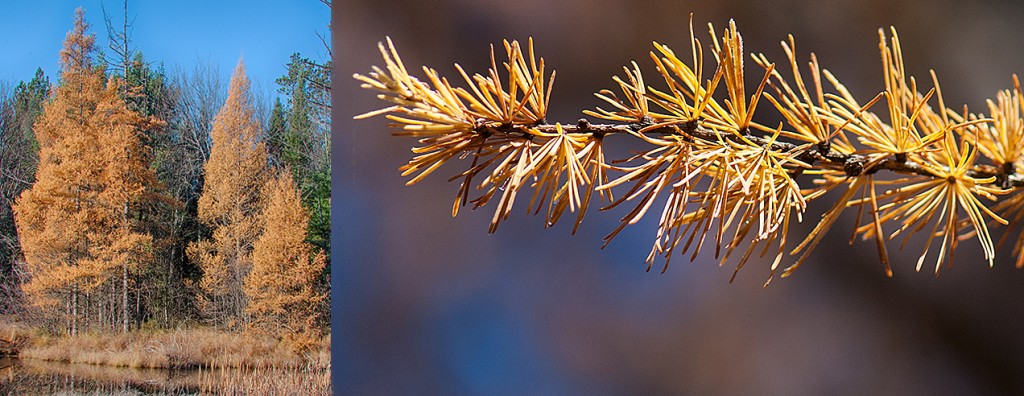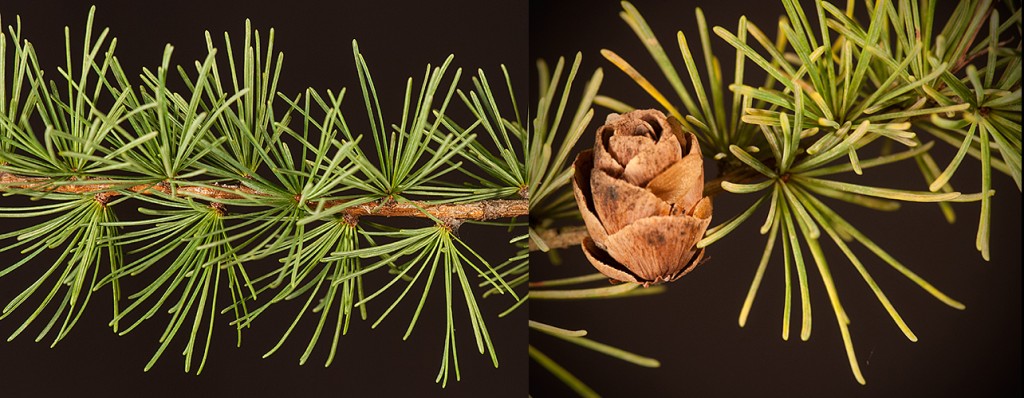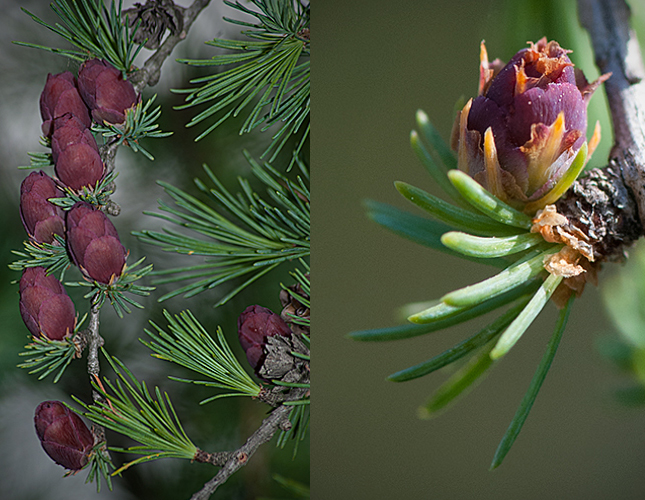Tamarack or American Larch (Larix laricina) is the only conifer in Michigan that sheds its leaves every fall. Last weekend in the Grayling area they were golden, glowing in the sunshine. One of the last trees to turn color its golden leaves are often in contrast with the snow.
Walking through a grove of Tamaracks in the winter is surreal. Their dark grey, brittle, bare, twisted branches appear dead. The leaf scar spurs look like knuckles and the trees appear to have fingers. Illustrations of the tree can be found in horror books.
In the spring the soft green clusters of leaves grow on short spurs and the reddish pollen cones spring forth. Gymnosperms (which include the conifers) are no longer said to have flowers but have pollen (male) and seed-bearing (female) cones. The seed-bearing cones hang on the trees for several years but lose their seeds during the winter or early spring.
Tamaracks grow in wet areas, often in quaking bogs. Their long fibrous roots spread out and anchor the tree in place. These flexible roots were used by Native Americans to sew birch bark onto canoes. The wood is resistant to rot and was commonly used to layer corduroy roads. It currently has little commercial value.
Tamaracks are easy to spot this time of year. Look for them in low, undisturbed areas throughout Michigan.
Copyright 2013 by Donald Drife
Webpage Michigan Nature Guy
Follow MichiganNatureGuy on Facebook




